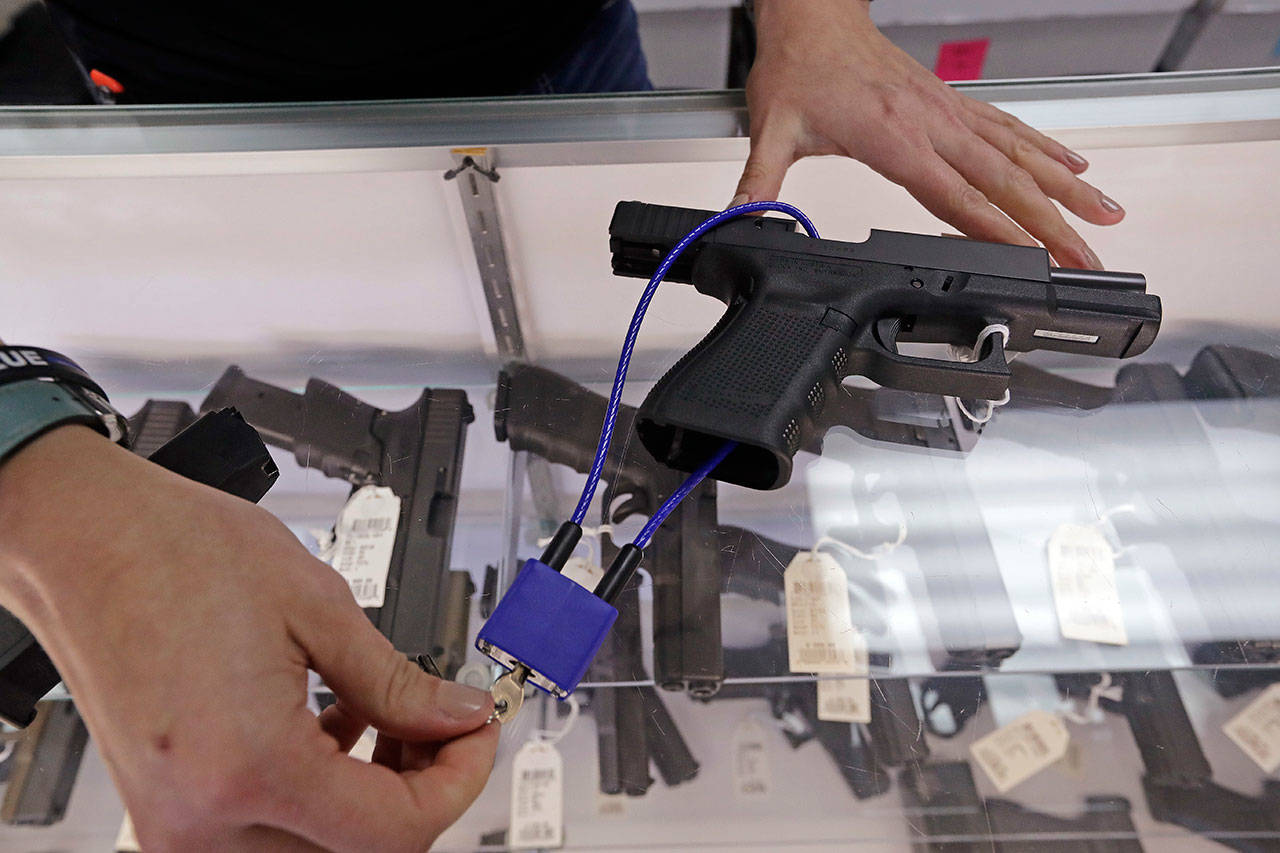By The Herald Editorial Board
One of the reasons Washington state’s initiative process has been so valued by the state’s voters for more than 100 years is that it allows citizens to take on the task of pursuing legislation when state or national lawmakers haven’t moved quickly enough to adopt a remedy.
That’s the case with at least two initiatives this year, Initiative 1631, which proposes a response to carbon emissions and climate change in the face of denials of man-made global warming by the Trump administration and some in Congress; and Initiative 1639, which proposes several provisions related to firearms safety that have been considered by state lawmakers in the past but have not won passage.
As with I-1631, The Herald Editorial Board recommends that voters approve I-1639 and make its measured and common-sense provisions law.
Among the provisions of I-1639, it would require:
An increase in the age to purchase a “semi-automatic assault weapon” to 21 from 18, bringing the age requirement in line with current state law on the purchase of handguns;
As with the current requirement for pistols, that the purchase of semi-automatic rifles be subject to a background check by local law enforcement agencies as well as the FBI’s National Instant Criminal Background Check System;
A firearm safety training course for gun owners in the last five years to purchase a firearm;
Dealers to charge a $25 fee for purchase or transfer a firearm, with the revenue going toward mental health programs and to reimburse law enforcement costs;
The state to create a process of annual checks that gun owners remain eligible to posses firearms.
A 10-day waiting period to purchase a firearm; and
A safe-storage provision, holding gun owners responsible if a child or other person prohibited from possessing a firearm gets access to and uses an unsafely stored firearm, causing injury or death. Additionally, dealers would be required to offer to sell or give those purchasing a firearm a safe-storage device, such as a trigger lock.
Beyond the musty slippery-slope argument that any legislation regarding firearms safety represents a dangerous erosion of Second Amendment rights, opponents of the initiative have focused primarily on the increase in the age to purchase a semi-automatic rifle and the safe-storage requirement.
Opponents complain that the safe-storage provision could endanger those who need quick access to their guns for self-defense. But, at least in the case of trigger locks, those devices can easily be removed in seconds.
What trigger locks, gun safes and other storage would provide is greater safety, especially in homes with children.
In 2015, 1,458 U.S. children under the age of 18 were killed by firearms, according to figures from the Centers for Disease Control and Prevention. Of those, 566 — nearly 39 percent— were recorded as suicide. Another 7,537 children sustained nonfatal injuries from guns.
Opponents also try to reason that those over 18 and under 21 are considered to be adults and should be afforded the same rights. But this state already made the determination that the age limit of 21 is necessary for the purchase of handguns. And the same age limit is set for the consumption of alcohol and marijuana.
Voters should note that the law does not prohibit the possession of firearms by those 18 to 21; those 18 and older can possess firearms in the home or place of business or while hunting or target shooting at a range. Nor does the initiative change state law that allows those under 18 to handle a firearm for huting and smiliar purposes.
Supporters point to research that shows that a disproportionate number of firearm homicides are committed by those 18 to 20 years of age.
And while opponents often claim that such measures wouldn’t have prevented a particular tragedy, Paul Kramer of Mukilteo, a citizen sponsor of the initiative said he thinks this law would have made a difference for his family and other families in Mukilteo.
Kramer is the father of a young man who was grievously wounded at a house party in Mukilteo in 2016 where three people died at the hands of Allen Christopher Ivanov. Ivanov was 19 when he went to the party, saw an ex-girlfriend with another young man, then returned to his car to retrieve a newly purchased semi-automatic assault-style weapon.
It was necessary for Ivanov to read the directions that came with the rifle before beginning his rampage.
“No family should have to experience the tragedy of losing a child to a senseless act of gun violence,” Kramer told the editorial board. “No kid should have to worry about being shot when they get together with their friends or when they go to school.”
Should I-1639 pass — and a recent Crosscut/Elway poll reported the initiative had 59 percent support as of Oct. 9 — it is likely to face legal challenges, as it did before the state Supreme Court this summer. But voters should not let that uncertainty keep them from voicing their support for necessary firearms safety legislation.
If a court challenge is successful, the initiative’s margin of electoral victory should provide ample reason for state lawmakers to adopt I-1639’s provisions as law.
Lawmakers would have no better measurement of public support than those results.
Video: A discussion with Initiative 1639 supporters Paul Kramer, Mukilteo resident and citizen sponsor of the initiative, and Rebecca Johnson of the Alliance for Gun Responsibility.
Video: A discussion with Keely Hopkins, state director for the National Rifle Association, and Phil Watson, chairman of the Save Our Security/No on 1639 campaign.
Talk to us
> Give us your news tips.
> Send us a letter to the editor.
> More Herald contact information.

























